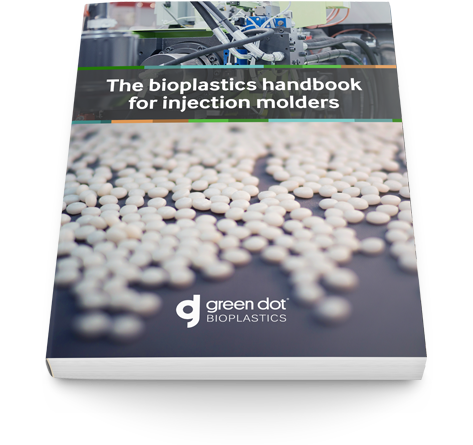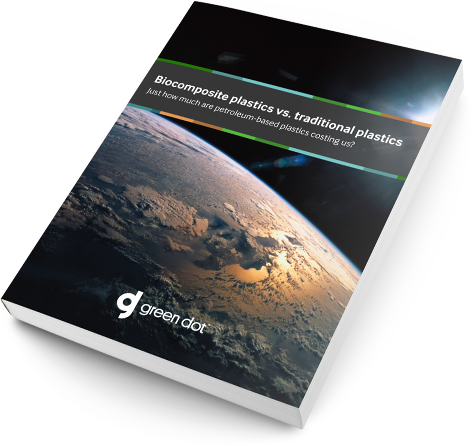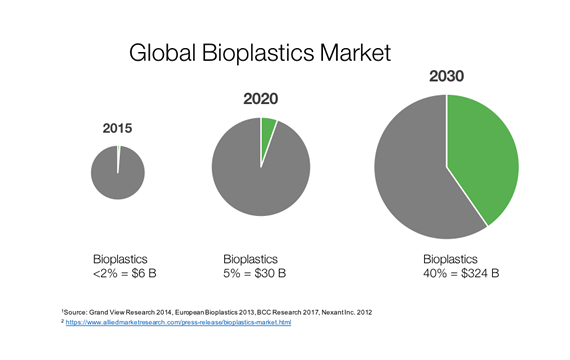What growth in bioplastics industry means for investors and the economy
The plastics industry is changing. Forecasts are predicting bioplastics will see tremendous growth over the next decade and now is an ideal moment for investors to start looking at bioplastics manufacturers.
Over the past few years, large plastic companies have become interested in having a more sustainable option to offer companies and consumers, similar to many other markets such as energy, agriculture and fuels. Bioplastics differ when compared to those other markets because the industry doesn’t rely on government subsidies. Instead, the responsibility is on the manufacturers to figure out how to reduce costs and make themselves a bigger player in the plastics market.
Being a lone wolf in the pack of eco-friendly efforts, one of bioplastics major appeals is an established infrastructure. Power generation such as solar and wind requires a change in infrastructure and a drastic development of new technologies, but bioplastics are being developed to work in existing injection molding equipment. Bioplastic resins and composites have been formulated to work in equipment that has been used for decades to produce plastic parts. Combine this with the fact that bioplastics can be done anywhere in the world and you have a tangible, feasible and sustainable effort that companies are latching on to.

The bioplastics handbook for injection molders
Get a straightforward discussion of processing best practices for bioplastics.
Investors stand to gain substantial benefits through an investment in bioplastic manufacturers. They should familiarize themselves with bioplastics and their inevitable growth to better understand why now is the perfect opportunity to get involved.
What are bioplastics?
Entire books could be written about bioplastics, but here are the crash-course essentials you should understand. Bioplastics are a family of materials with differing properties and applications. A material is defined as a bioplastic if it is either biobased, biodegradable or features both properties.
Biobased materials are made from organic materials containing biogenic carbon – replacing petrol or fossil-based carbon with renewable carbon. The percentage of renewable material necessary to meet the USDA’s Biopreferred Program certification varies according to the product.
Biodegradable materials have the ability to undergo biodegradation, a chemical process during which micro-organisms in the environment convert materials into natural substances such as water, carbon dioxide and compost. The process of biodegradation depends on the surrounding environmental conditions.

Biocomposites vs. traditional plastics
Plastics are useful and ubiquitous. But just how much are traditional formulations costing us?
How will the market for bioplastics change in the coming years?
Bioplastics are on the rise and will continue to capture a larger share of the plastics industry year after year. Grand View Research stated bioplastics controlled less than a 2 percent share of the plastics industry in 2015. They predict bioplastics will control a 5 percent market share of the total plastics market by 2020 and a 40 percent share by 2030, making bioplastics a $324 billion-dollar enterprise in just over a decade.
The main drivers for these predictions are based on consumer demand, corporate vision, practicality of design and costs. Consumers are becoming more aware of the dangers petroleum-based plastics and the benefits of sustainable plastics. Corporations are employing sustainability officers to incorporate best-practices into their manufacturing and procurement processes. For example, Coca-Cola has introduced PlantBottle, a new plastic bottle packaging made up of 30% plant-based materials. Bioplastic manufacturers are designing new formulations that meet or exceed performance standards of traditional plastics. Using Design for Manufacturing (DFM) practices when developing formulations, bioplastic manufacturers are driving costs down by ensuring scalability and resourcing materials properly. These four components are the main factors that lead experts to believe bioplastics will continue a meteoric rise in the plastics industry.
Possibly the most comforting aspect of investing in bioplastics is the fact that bioplastics are a replacement for traditional petroleum-based plastics. Plastics are an integral part of manufacturing – the demand and markets are already established. Bioplastics are merely replacing a dated, unsustainable technology for a new one with minuscule changes to infrastructure while maintaining quality and effectiveness.
Bioplastics: a leader in the eco-friendly circular economy
A circular economy is an alternative possibility to the traditional linear economy model – take, make, dispose. In the circular economy, resources are kept in use for as long as possible with the goal to keep products, components and materials at their highest effectiveness and value at all times.
Since plastics are a prominent material in modern manufacturing, they play an integral role in the switch to a circular economy. The increased use of bioplastics is reducing landfill waste, utilizing renewable feedstocks, recycling petroleum-based plastics and limiting the use of finite resources to create products that perform just as well, if not better, than traditional plastics in many applications.
Bioplastics are the key component to bringing the plastics industry out of a wasteful linear economy and into the circular economy. Their increased use will yield positive results, not only in environmental and economic instances, but also functional impacts.
What are the takeaways for investors?
Bioplastics are now a proven product that consumers are starting to seek out when making purchasing decisions – creating demand. Don’t forget, since the infrastructure can remain the same, bioplastics are scalable for commercial production. The technology is there, companies are creating it, consumers are demanding it and corporations are implementing it.
According to the Morgan Stanley Institute for Sustainable Investing, 75 percent of investors polled are interested in sustainable investing. Their research says interest continues to be strong and that the consumers’ interests in sustainable products is driving investor interest.
The fact that bioplastics aren’t searching for new markets and instead, are merely replacing traditional plastics in the markets they already serve means there isn’t much blocking bioplastics path. Analysts are predicting drastic growth year over year for the foreseeable future. A considerable majority of investors are interested in bioplastics manufacturing. It’s only a matter of time before the two come together.
Bioplastics are searching for commercialization in the markets that already exist. Momentum is building, and production is on the verge of a dramatic uptick.



